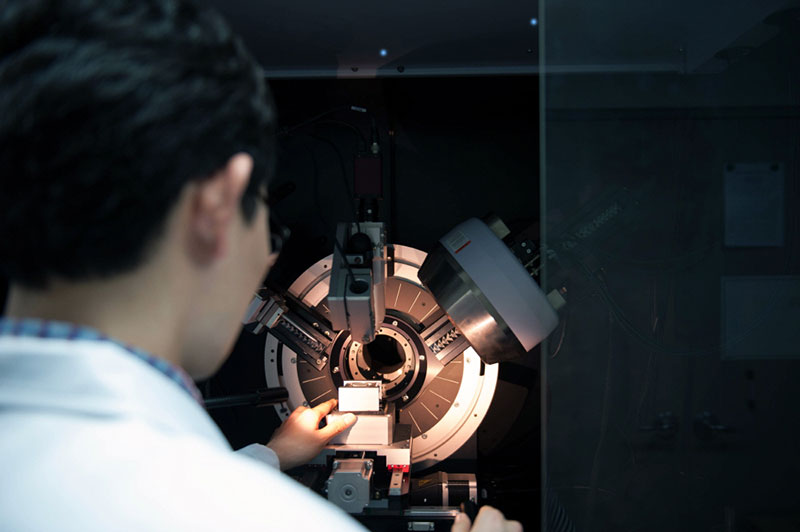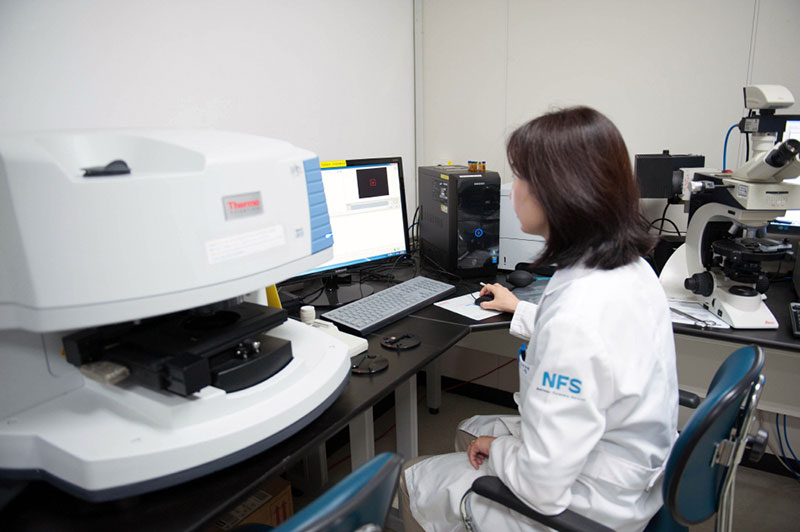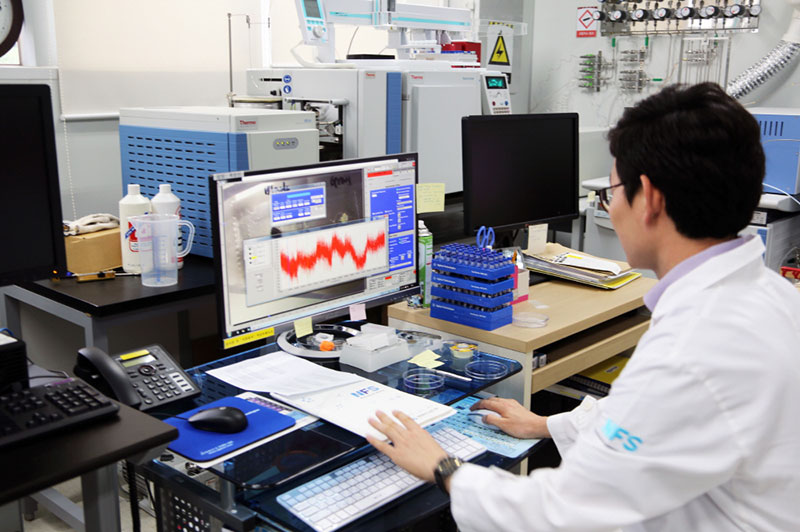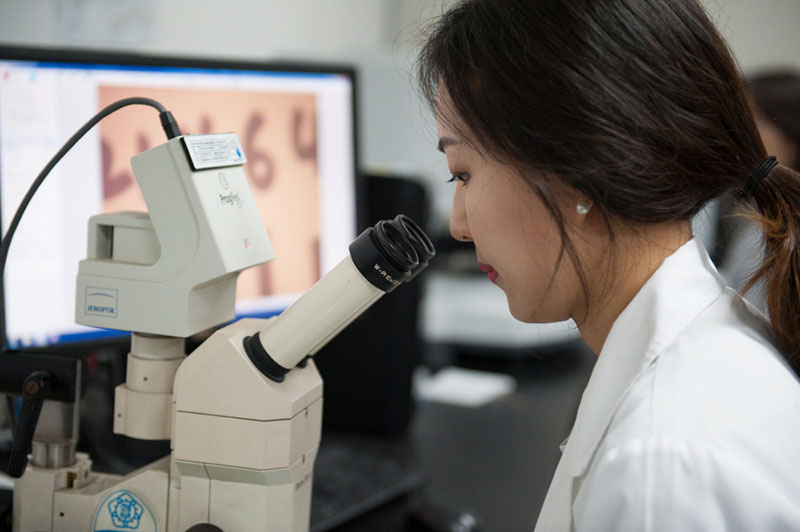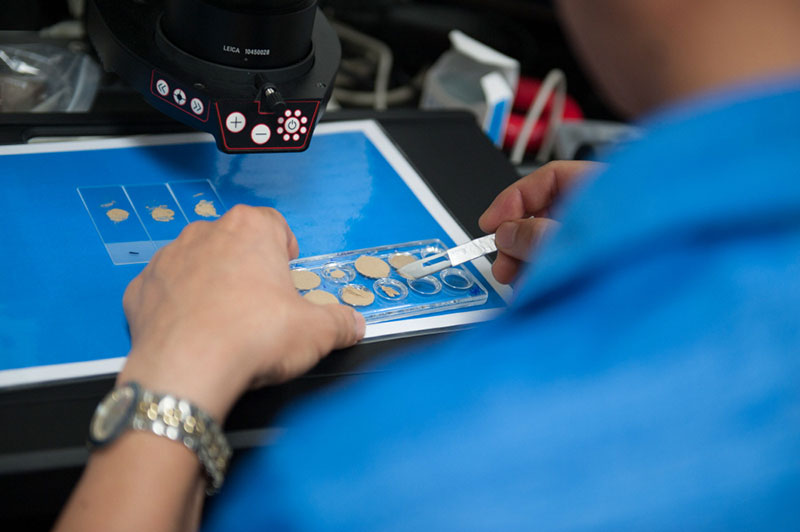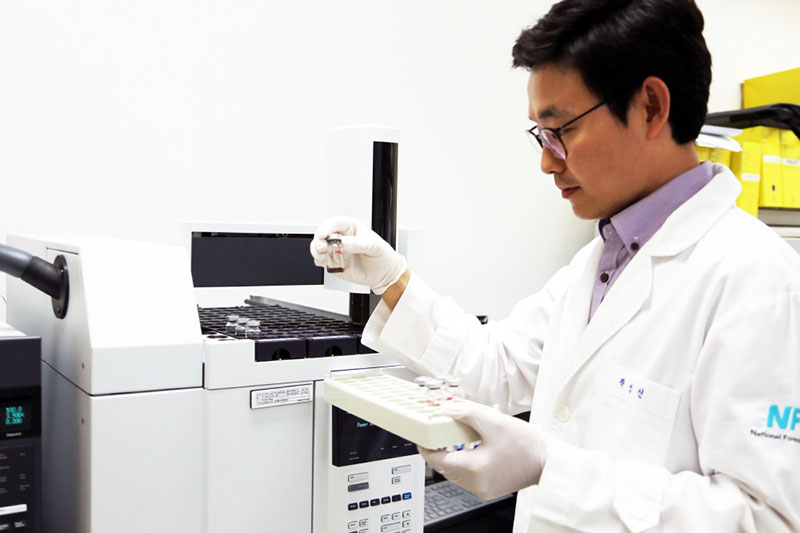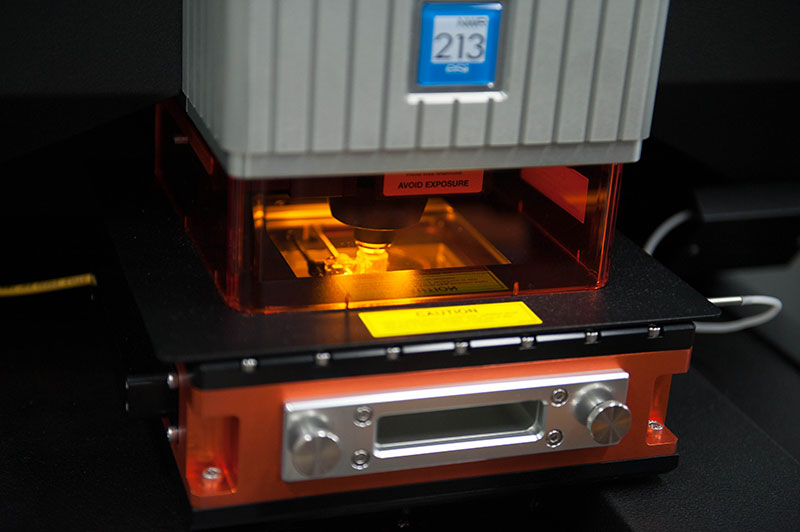Analysis Service
Forensic Chemistry Division
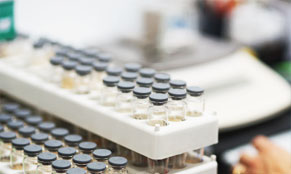
Forensic Chemistry Division provides scientific support to law enforcement with the state-of-the-art analytical techniques. The goal is to contribute the identification of chemical substances and the reconstruction of crime scene in various cases, such as murders, assaults, suicides, arson, explosion, chemical leaking, terror, addiction, etc. The division also conduct the analysis of biological evidences in the case of driving under the influence of alcohol(DUIA), sexual assault cases, and alcohol/disease related death cases.
 Trace Evidence Analysis
Trace Evidence Analysis
Analysis of various trace evidence (fibers, paints, glass, soils, etc.) found at crime scenes
 Chemical Fingerprinting Analysis
Chemical Fingerprinting Analysis
Determination of a source of origin and comparison of questioned materials to known materials based on stable isotope ratio and multi-elemental analyses
 Biomarkers for Alcohol consumption and Diseases
Biomarkers for Alcohol consumption and Diseases
Analysis of blood alcohol concentration(BAC) and biomarkers for death related diseases in postmortem cases
 Hazardous chemical analysis
Hazardous chemical analysis
Analysis on acids, alkalis, hazardous chemicals, environmental pollutants, harmful gases
 Fire debris and inflammable substances analysis
Fire debris and inflammable substances analysis
Flammable liquids, organic solvents, ketone bodies, illicit oils
Introduction of Laboratory
The Forensic Chemistry Division consists of five sections including Trace Evidence Analysis Lab., Chemical Fingerprint Analysis Lab., DUIA/Biomarkers for Alcohol Consumption and Diseases., Hazardous Chemical Analysis Lab., and Fire Debris and Inflammable Substances Analysis Lab.
Performs analysis on trace evidence includes fibers, resins, paints, and different types of foreign materials related to various cases such as murder, robbery, theft, crash, etc.. Analysis of trace evidence is performed by infrared spectroscopy (FT-IR), microspectrophotometry(MSP), Raman spectroscopy, and X-ray fluorescence spectroscopy (XRF), X-ray diffractometer (XRD) with various microscopes (stereoscopic microscope, high magnification microscope, polarizing light microscope, etc.).
Determines a source of origin and performs comparison of questioned materials to known materials based on chemical fingerprints of substances by the stable isotope ratio and multi-elemental analyses. Trace elements and isotope composition of materials vary depending on a source of origin and raw materials used for manufacturing products. Chemical fingerprint analysis is performed using the-state-of-the-art instrument (LA-ICP-MS, IRMS, XRF, XRD, etc.) to determine a source of origin and to perform comparison of questioned materials to known materials such as paint chips, tape, glass fragments, and so on. The laboratory has established a database of glass, soil, tape, etc. to achieve goals by the stable isotopes and multi-elemental analyses.
Conducts the analysis of biological evidences in the case of driving under the influence of alcohol(DUIA), sexual assault cases, and alcohol/disease related death cases. The lab confirms the alcohol concentration and measures the content related to decomposition index substances and drinking in blood and other tissues of postmortem specimens performing ketone analysis, which is an index substance for chronic alcoholism and diabetes. Recently, the lab has developed a new method to determine the consumption of alcohol analyzing the ethanol metabolites(EtG and EtS) from blood and urine samples.
Determines the presence and concentration of various hazardous chemical substances, including heavy metals and acids in water, soil and waste in different forensic environmental cases. In addition, the lab performs the analysis of chemical agent components from biological samples, related to leak, spraying, suicide, homicide, and poisoning cases including misuse and abuse, etc..
Tasks on Environmental Hazardous Substances
- The laboratory traces the source of discharge and determines contamination to identify the cause of occurrence by analyzing environmental samples in the case of environmental accidents such as unauthorized discharge of wastewater, illegal dumping of waste, damage to crops, and abandonment of aquatic products.
Tasks on Dead Bodies
- The laboratory estimates the cause of death by measuring the electrolyte concentration in the blood, etc.
- Carbon monoxide in the blood of a deceased associated with a fire or suicide
- It measures hemoglobin and determines the cause of the accident such as suicide or homicide, etc.
Analyzes ignitable liquids from fire debris to determine whether ignitable liquids are related to the case. Also, the lab analyzes and evaluates the authenticity of oil in fraud oil cases, potential materials for chemical accidents, and hazardous gases in accidental poisoning or suicide cases.
Analysis and evaluation of illicit oil related to petroleum products
- The Volatile Substance Research Lab analyzes and evaluates the authenticity of oil manufactured by mixing another petroleum product or petrochemical product to a certain petroleum product as well as alternative fuels.
Analysis and evaluation of chemical agents for chemical accidents
- The laboratory analyzes and evaluates the causative material of an accident when an explosion or a fire occurs during the chemical process, and promptly implements an on-site assessment in the event of a chemical leak accident.
Analysis and evaluation on harmful gases for harmful gas poisoning accidents
- The laboratory identifies the cause of various safety accidents by harmful gases and analyzes and evaluates the gas that caused a poisoning accident or gas suicide.
Lab Photo
Laboratory Equipment
Laboratory Equipment
닫기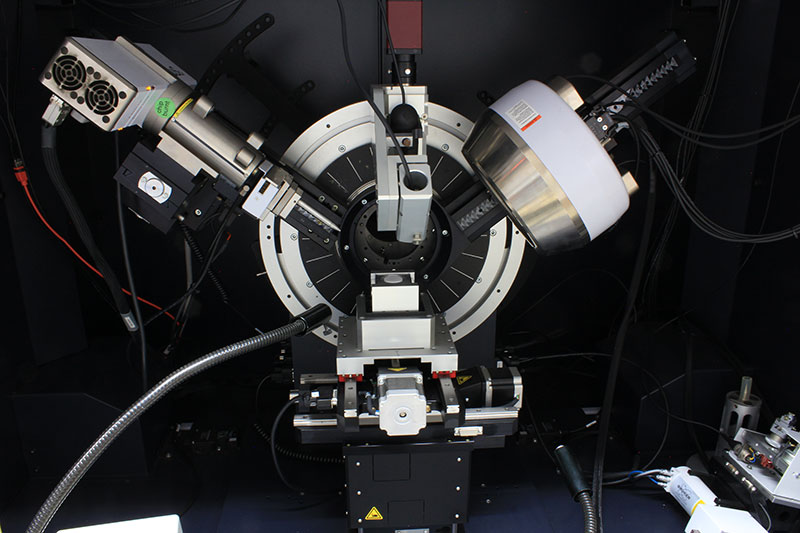
- Analysis of information about the atomic and molecular structures of crystals using the diffraction of X-rays incident into the crystals
- High-performance, non-destructive analysis for the analysis of material structure such as cement, rocks, metals, inorganic matters, and polymers
Laboratory Equipment
닫기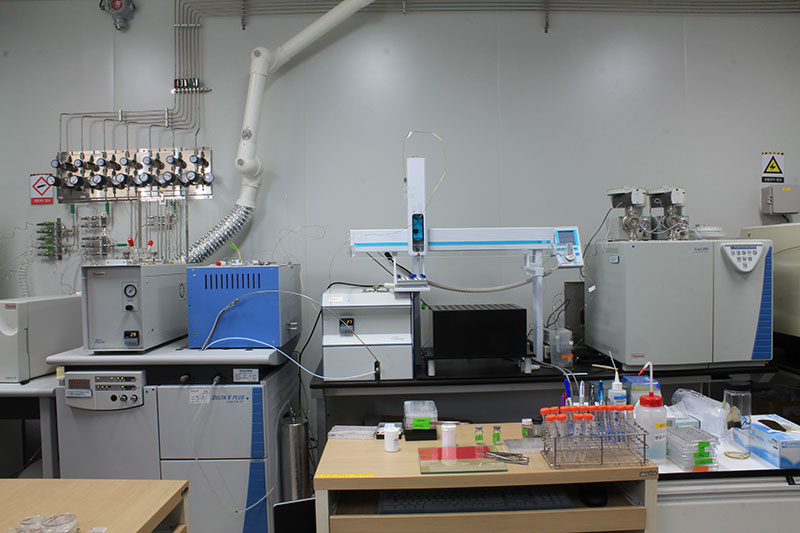
- Analysis of hydrogen, oxygen, nitrogen, carbon and sulfur isotope ratio
- Analysis of coidentity of industrial products
- Tracking the origin and environmental pollutant source
Laboratory Equipment
닫기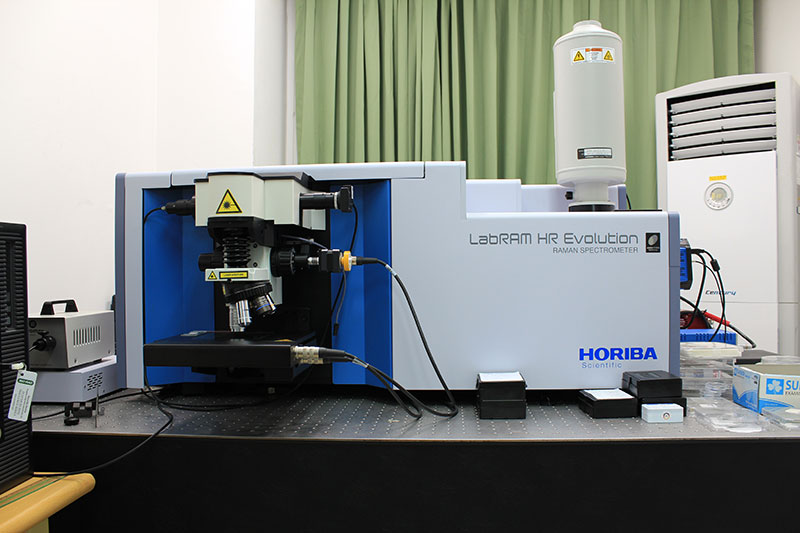
- Analysis of non-destructive components of organic, inorganic and polymeric materials such as fibers, dyes, pigments, soil, paint, resins, plastics, and tapes
- Analysis of constituents of water-soluble matters to be analyzed
Laboratory Equipment
닫기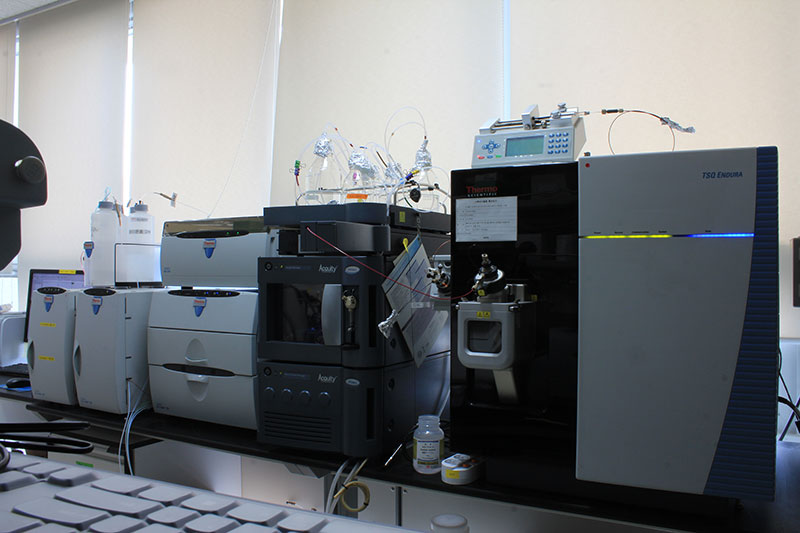
- Identification of acid/alkali components and determination of the content
- Identification of sulfide ion and its concentration in human derivatives of death from asphyxiation by hydrogen sulfide
- Confirmation of electrolyte concentration in blood
- Identification of organic acids and sugars and their contents
Laboratory Equipment
닫기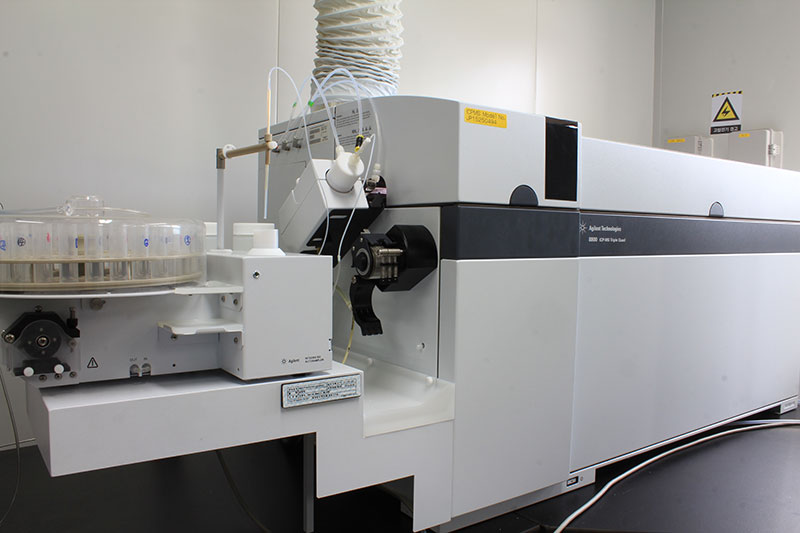
- Measurement of concentrations of main elements and trace elements
- Measurement of concentrations of ink, hair, glass, metal, etc.
- Standard contents of harmful heavy metals
Major Analysis Cases
- 1
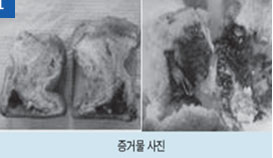 20010.12
20010.12
Foreign body (presumably a rat) mixed in bread made by famous bakery - 2
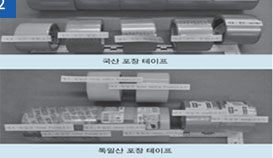 2012.08
2012.08
Samsung OLED TV Loss Case - 3
 2016.03
2016.03
Cheongsong Village Hall Pesticide Poisoning Case - 4
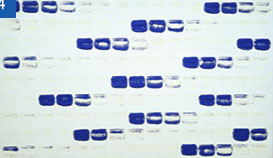 2016.10
2016.10
Determination of a forgery of monochrome of the painter, Lee U Fan
Major Analysis Cases
닫기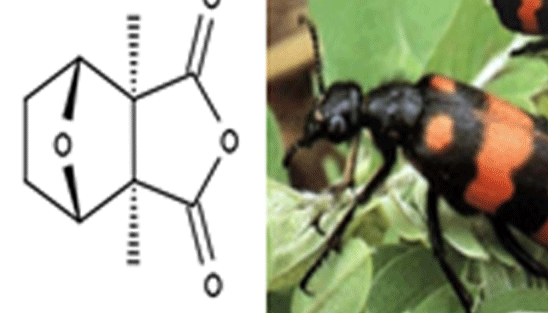
불임치료목적으로 복용한 반묘(cantharides)에
의한 사망사건
강원도 원주시 한의원에서 불임치료목적으로 지은 한약, 한약가루약(일명 반묘가루) 및 한약추출액을 혼합하여 마신 직후 환자가 사망하였으며, 감정결과 위 내용물 및 혈액에서 칸타리 딘(cantharidin)이 검출됨. 칸타리딘은 반묘의 주성분으로 치사량이 10mg이고 과량복용시 복통, 이질, 토혈, 혈뇨, 혈압 저하 등에 이어 사망한다고 알려져 있음

